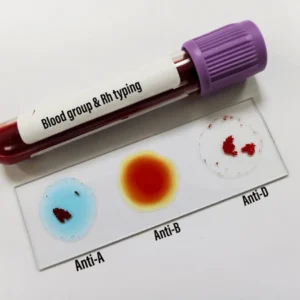Here are some short descriptions for the Platelet Count test, focusing on its significance, testing methodology, and clinical implications:
Platelet Count
- Definition: The Platelet Count test measures the number of platelets in a given volume of blood. Platelets are small cell fragments essential for blood clotting and wound healing, playing a crucial role in preventing excessive bleeding.
- Testing Methodology: The test is typically performed using a blood sample drawn from a vein. The sample is analyzed in a laboratory using automated hematology analyzers, which count and calculate the number of platelets per microliter of blood.
- Clinical Significance: A normal platelet count is vital for hemostasis (the process that prevents and stops bleeding). Abnormal counts can indicate various health conditions: thrombocytopenia (low platelet count) may lead to increased bleeding risk, while thrombocytosis (high platelet count) may suggest clotting disorders or underlying diseases.
- Risk Assessment: Monitoring platelet counts is important for individuals with conditions such as liver disease, bone marrow disorders, or those undergoing treatments like chemotherapy that may affect blood cell production. It helps guide clinical decision-making and treatment planning.
- Guidelines for Interpretation: Normal platelet counts generally range from 150,000 to 450,000 platelets per microliter of blood, though reference ranges may vary slightly by laboratory. Values outside this range require further investigation to determine the underlying cause.
- Follow-Up and Management: If platelet counts are abnormal, healthcare providers may recommend additional tests to diagnose the underlying condition. Management strategies may include treating the underlying cause, lifestyle modifications, or specific therapies to address the bleeding or clotting risks associated with abnormal platelet levels. Regular monitoring may be necessary for patients with known hematologic conditions.













Reviews
There are no reviews yet.